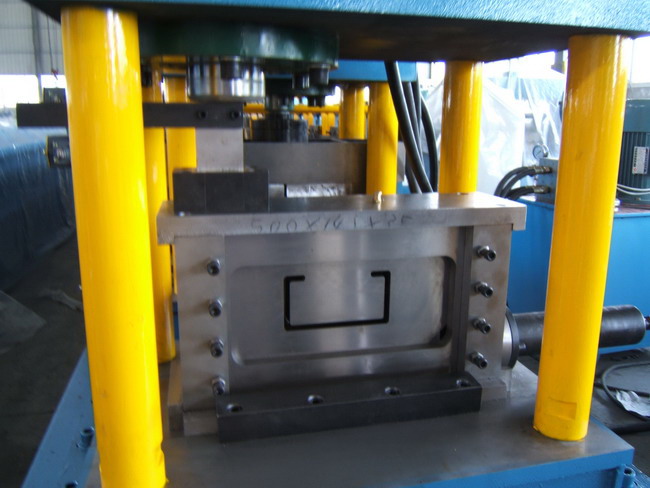
Stud and Track Rolling Machine An Overview
In the rapidly evolving world of manufacturing and construction, the necessity for efficient, durable, and precise machinery is paramount. Among the various types of equipment that have come to the forefront in recent years, the stud and track rolling machine has been recognized as a pivotal tool in the fabrication of metal components. This article aims to delve into the functionality, benefits, and applications of this essential machinery.
What is a Stud and Track Rolling Machine?
A stud and track rolling machine is specifically designed to create metal studs and tracks used predominantly in the construction of walls, ceilings, and other structural forms. The machine typically rolls sheets of metal into specific shapes and sizes required for various construction projects. It employs a series of rollers that bend and shape the metal into desired profiles, ensuring functionality while maintaining structural integrity.
These machines are adaptable and can be programmed to produce a range of stud sizes and configurations, making them an invaluable asset for manufacturers who need to meet the diverse demands of their clients. In this way, the stud and track rolling machine fulfills both the need for customization and efficiency in production.
How Does it Work?
The operation of a stud and track rolling machine is characterized by its efficient use of metal sheets, which are fed into the machine. The machine consists of multiple rollers arranged strategically to shape the metal sheet as it passes through them. The rollers can be adjusted to create different profiles, allowing manufacturers to produce various types and sizes of studs and tracks.
Once the metal is shaped, additional processes such as cutting, punching, and notching may occur, depending on the requirements of the end product. This versatility means that a stud and track rolling machine can significantly streamline the production process, reducing the need for additional equipment and labor.
Key Benefits

1. Efficiency The primary advantage of utilizing a stud and track rolling machine is the efficiency it brings to the production process. By automating the shaping of metal components, manufacturers can produce large quantities in a shorter timeframe, which leads to increased productivity.
2. Precision These machines are designed to deliver high levels of precision, ensuring that each metal component meets the exact specifications required for construction. This level of accuracy reduces waste and material costs, as fewer errors mean less rework is necessary.
3. Cost-Effectiveness Although the initial investment in a stud and track rolling machine can be significant, the long-term savings associated with reduced labor costs and material waste often outweigh this initial expenditure. As a result, businesses can improve their profit margins while delivering high-quality products.
4. Versatility The adaptability of these machines allows manufacturers to cater to a wide range of projects. Whether constructing residential homes or commercial buildings, the ability to produce various sizes and styles of metal studs and tracks empowers manufacturers to meet diverse client needs.
Applications
The application of stud and track rolling machines is widespread in the construction industry. They are integral in the framing of interior walls, ceilings, and other structures, particularly in light gauge steel framing. Moreover, with the ongoing trend toward modular and prefabricated construction, the demand for these machines is anticipated to grow even further.
Beyond construction, these machines can also be used in the production of metal furniture, shelves, and storage systems, showcasing their versatility across multiple industries.
Conclusion
In conclusion, the stud and track rolling machine represents a significant advancement in the realm of metal fabrication. By combining efficiency, precision, and versatility, this machine has become an essential part of modern manufacturing processes. As the construction industry continues to evolve, the importance of such machinery will only increase, solidifying its place as a cornerstone of contemporary metalworking practices. Businesses that invest in stud and track rolling machines are likely to find themselves at a competitive advantage, well-equipped to meet the demands of a dynamic market.